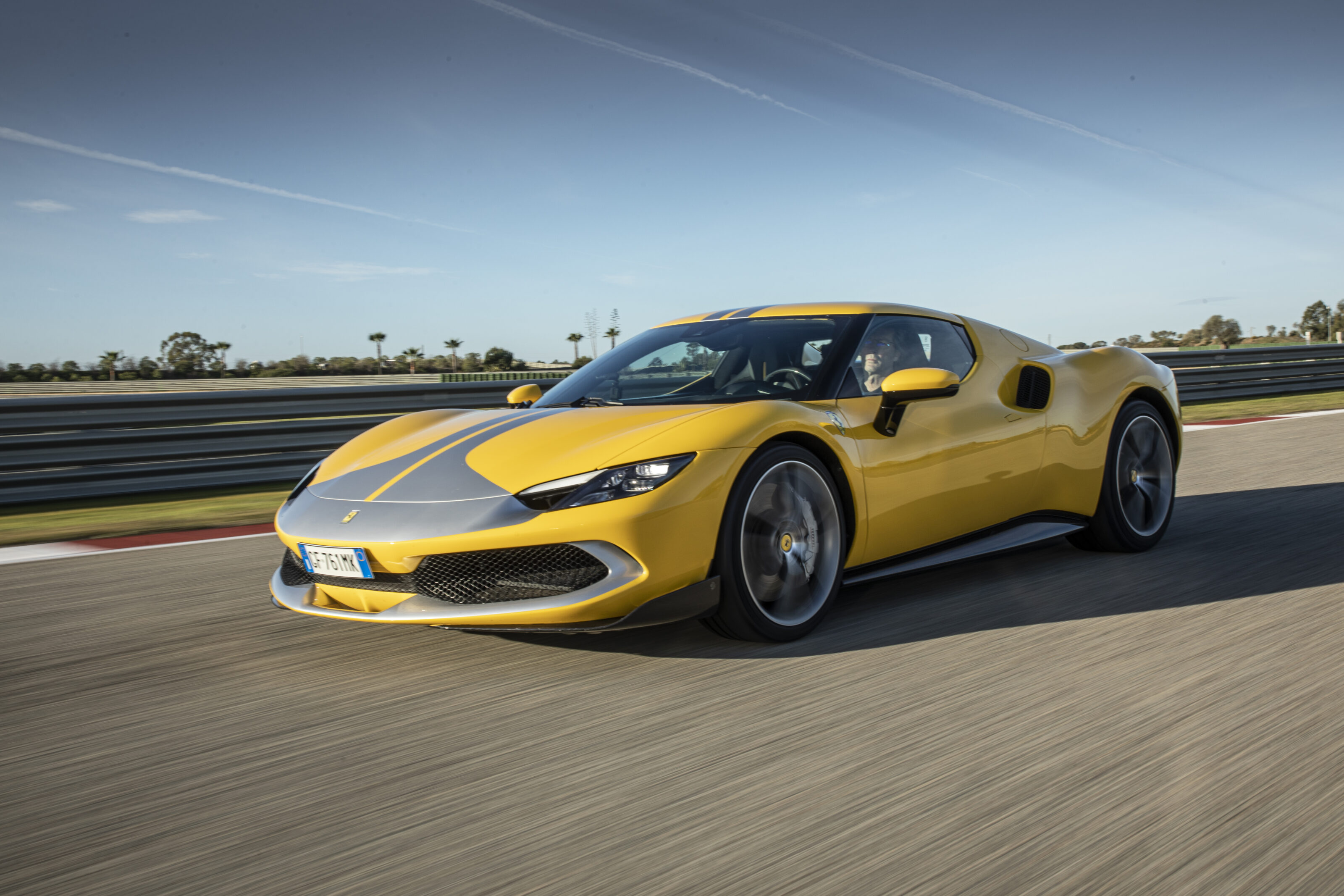Things we like
- Balance
- Versatility
- Depth of engineering
- Truly potent performance
Not so much
- Styling divides opinion
- Front-end push at limit
- We need a local drive
An epic yowl fills the cabin, the intensity rising in sync with the unrelenting surge of acceleration. The readout on the digital speedo flickers past 270km/h. The 250-metre braking marker flashes through the peripheral vision as the first blue shift light appears on the steering wheel. Wait a heartbeat… now! Grenade the brake pedal just at the 200-metre board. The nose dips and the shoulder belts of the four-point harness bite, but the Ferrari 296 GTB tracks straight and true. The entry to the sharp right hander is looming fast. Too fast.
Keep the left foot hard, hard on the brake. Work the left-hand paddle and wait for the late turn-in. There! Crank the steering wheel and, counter-intuitively, stay hard on the brakes. The front-end bites and the Ferrari dives into the corner, the rear axle obediently following. Off the brakes at the apex and onto the throttle, opening the steering.
Torque and power arrive in one seamless rush. There’s a slight wiggle at the rear, tamed with a touch of counter-steer, as the tacho needle sweeps around to the 8500rpm redline. Then the Ferrari grips and slingshots down the straight at a rapid pace.

It’s so fast, so agile, this Ferrari. And yet everything happens with such sublime control and communication, precision and predictability, it creates time for the driver to analyse and adjust its every move. Old-school purists might be wringing their hands over the fact it’s a plug-in hybrid with a six-cylinder engine, but the Ferrari 296 GTB makes you feel like a driving god.
The 296 GTB is the first six-cylinder road-going Ferrari in history. Ah, but what about the jewel-like V6-powered Dino 206s and 246s built between 1967 and 1974? They were never badged or sold as Ferraris, Maranello insists, the Dino brand created as an epitaph by Enzo Ferrari for his son Alfredo, who is credited with suggesting a 1.5-litre V6 engine for Ferrari’s F2 cars just before he died in 1956. But what’s more important, however, is that few people would ever guess the 296 GTB is a six-cylinder car on pace.
It doesn’t sound like a six-cylinder car. And it certainly doesn’t feel like a six-cylinder car when you mat the throttle. The compact new twin-turbo 2.9-litre V6 at the heart of the 296 GTB powertrain, codenamed F163, features a wide-angle 120-degree vee, with the fast-responding counter-rotating turbochargers mounted in the vee and the intakes on the outside of the cylinder heads. The wide-angle vee not only lowers the centre of gravity by reducing the height between the tops of the cylinder heads and the forged crankshaft, but also gives the engine a symmetrical firing order. Clever stuff.
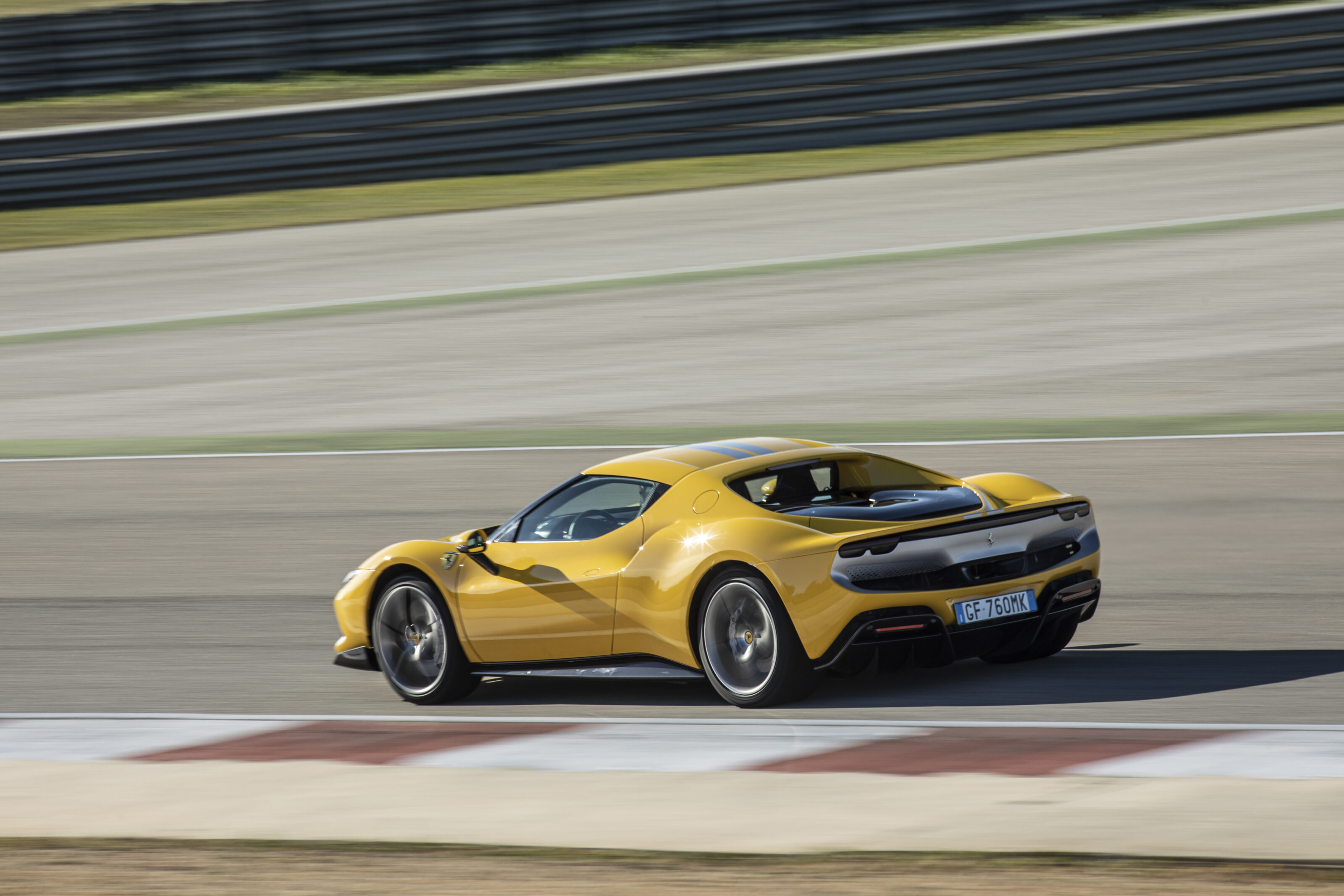
As a result, the F163 spins smoothly to the 8500rpm rev limiter while generating similar third-order harmonics to that of a V12, which Ferrari engineers have amplified into the cockpit via its patented ‘hot-tube’ system, which takes sound from the exhaust before the hot gases hit the catalytic converters. And it really does sound like a V12. One full throttle run is all you need to understand why Ferrari engineers took to calling the F163 the ‘piccolo V12’ during its development.
The 296 GTB is also Ferrari’s first rear-drive-only PHEV, with an e-motor/generator – dubbed the MGU-K by Ferrari in a nod to the similar technology used on its Formula 1 cars – sandwiched between the V6’s block and the compact new eight-speed dual-clutch transmission.
An evolution of the unit used in the SF90, the 296 GTB’s MGU-K develops 123kW and maximum torque of 315Nm, a 20 per cent improvement on previous versions. Fed by a 7.45kWh battery pack that stretches across the car between the cockpit and the engine, the MGU-K can drive the 296 GTB up to 25km on pure e-power.
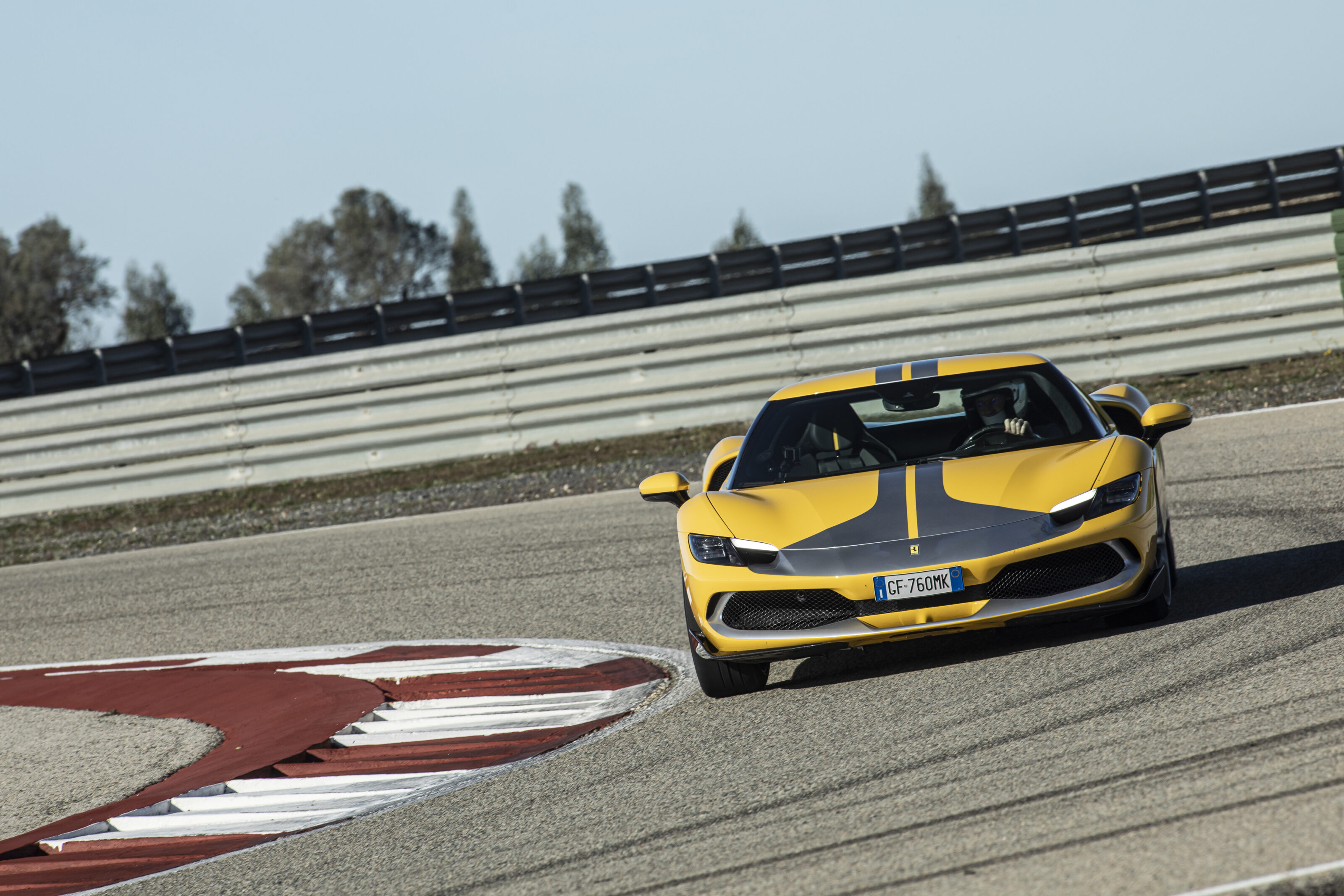
But its main job is to provide torque fill at low revs, and to boost power at higher revs. On its own the F163 V6 makes 488kW, a specific output of 163kW per litre that is a new record for a production car internal combustion engine. With the MGU-K lending a helping hand, the 296 GTB’s powertrain punches out a mighty 610kW at 8000rpm and 740Nm of torque at 6250rpm.
The interaction between the ICE and the MGU-K has been carefully tuned to ensure the powertrain delivers the searing, soaring surge of acceleration right to the redline that is the hallmark of the finest naturally aspirated 12-cylinder Ferrari engines. The instant-on torque output of the e-motor is adjusted for each gear to keep the delivery as linear as possible. “We are not using all the powertrain at the lower end yet,” confirms Ferrari test and development driver Raffaele de Simone at the launch. “The car can do more.”
The result is a powertrain of extraordinary range and flexibility. Ferrari claims a 0-100km/h acceleration time of 2.9 seconds, while the 0-200km/h sprint takes 7.3sec on the way to a top speed of more than 330km/h.
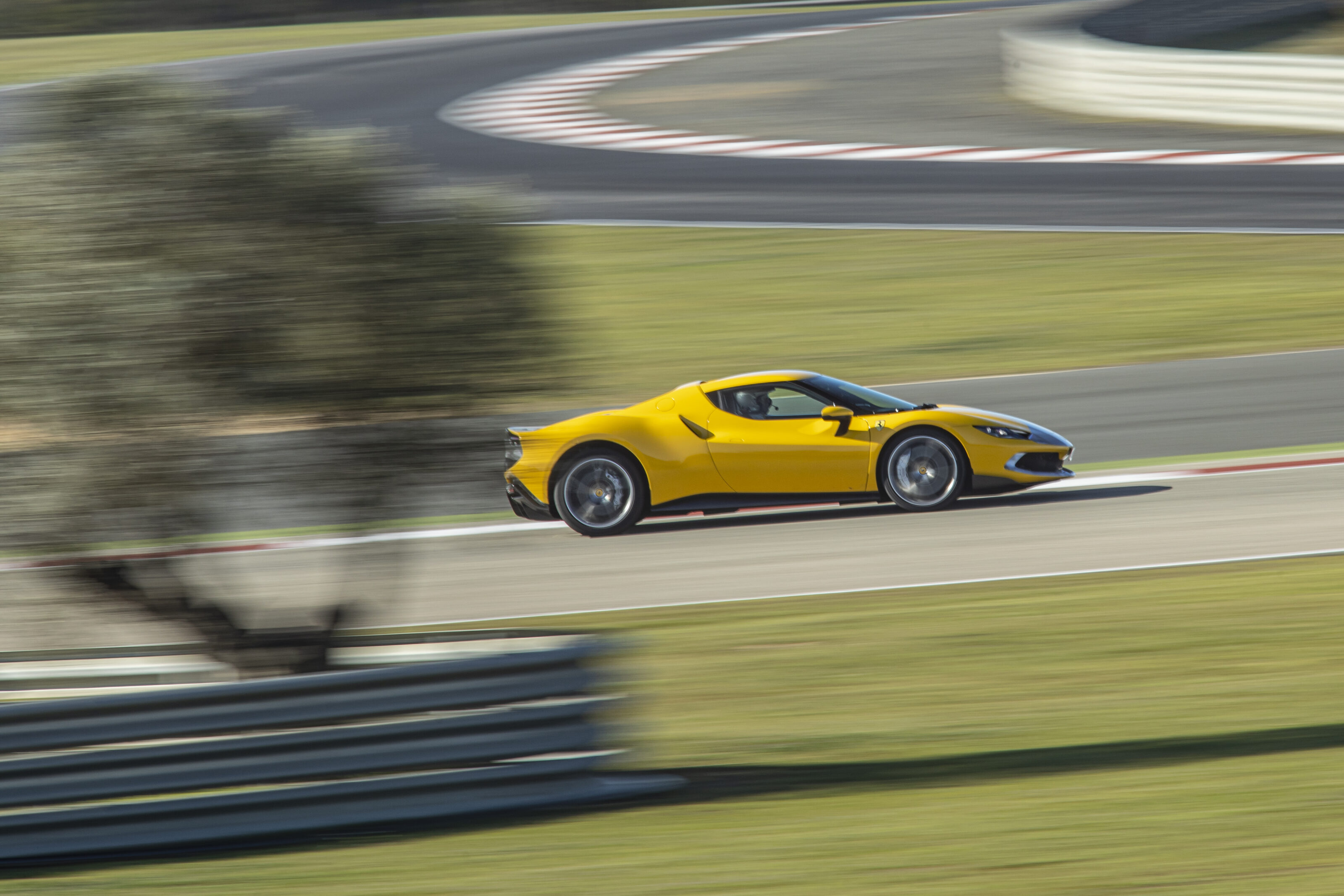
However, those numbers don’t tell the full story: In sixth gear the 296 GTB will pull cleanly and strongly from 1400rpm – about 50km/h – to… well, we couldn’t empirically confirm it because we ran out of road at 235km/h, but simple maths suggests the Ferrari still had another 50km/h to go before it needed seventh gear.
What that means is that, although the eight-speed transmission’s ratios are beautifully spaced, you don’t have to be in precisely the right gear to get the 296 GTB to punch hard out of corners. There’s torque and there’s power, whenever you need it.
Even better, you can make the most of it because the chassis is every bit as accomplished as the powertrain. The 2600mm wheelbase is the shortest in the current Ferrari lineup, and the compact dimensions were deliberately chosen to deliver maximum agility. But it’s not just geometry that makes the 296 GTB feel preternaturally alert yet supremely composed: Ferrari has delved into the electronic dark arts to give the chassis the dynamic range to match the powertrain.
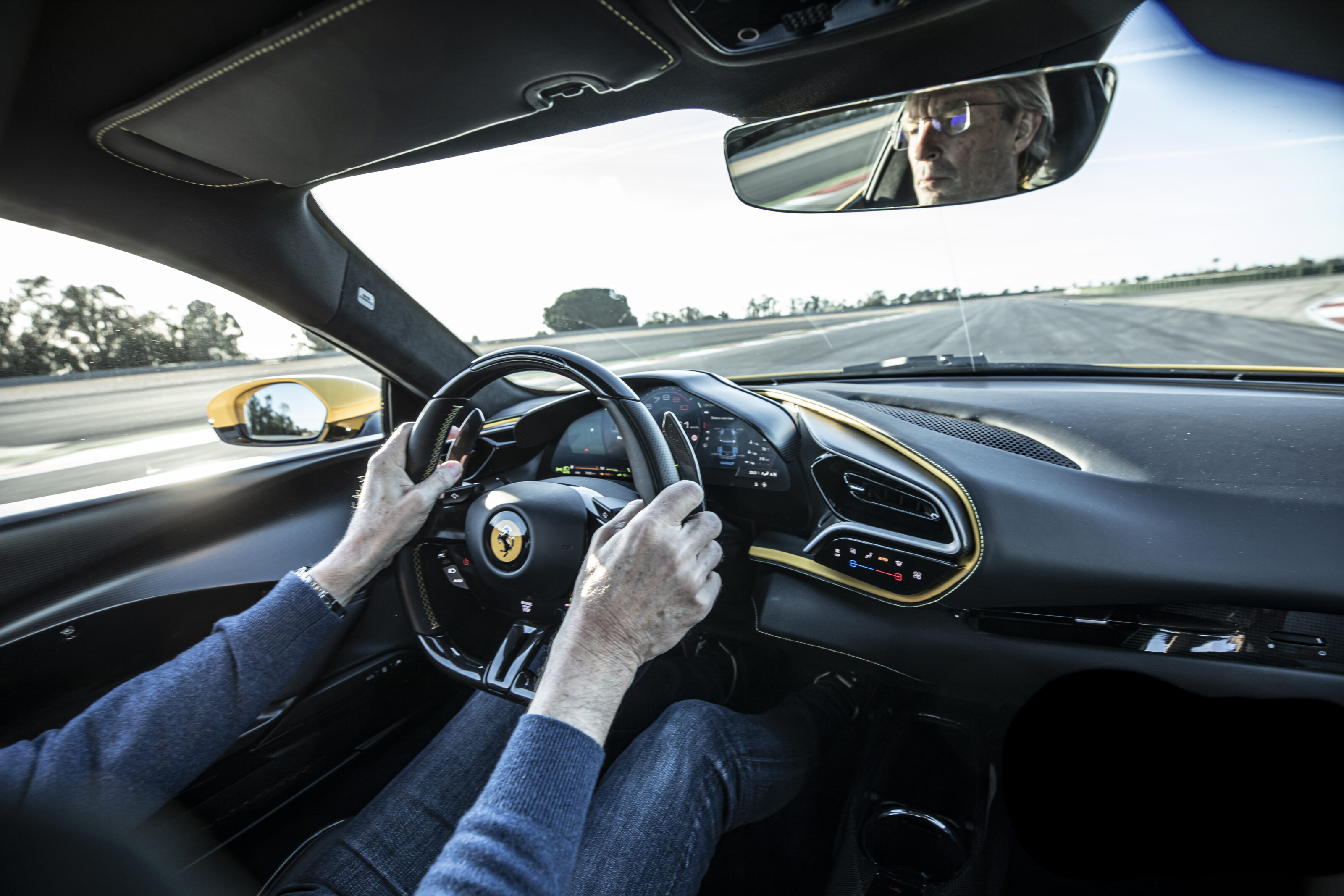
The 296 GTB is the first rear-drive Ferrari with electronic power steering (the SF90, which has electrically driven front wheels, also has it). It has half the compliance of the previously used hydraulic systems, improving response, and learnings from the SF90 have enabled Ferrari to carefully tune the system to filter unwanted road shock while retaining maximum feel and feedback. “We moved to EPS later than the others because we can now give it the Ferrari feeling,” says Raffaele de Simone.
Getting the front axle to react quickly is one thing. The trick is getting the rear axle to support that rapid response. A key element of the rear suspension setup is the 305/35 ZR20 rear tyre – a Michelin Pilot Sport 4S in standard spec, or a Michelin Pilot Sport Cup 2R, which comes with the optional, track-focused Assetto Fiorano package.
The 35 per cent aspect ratio (most modern mid-engine Ferraris have a 30 per cent aspect ratio rear tyre) gives the right amount of flex in the sidewall, says de Simone, to smoothly ramp the initial load response into the rear suspension.
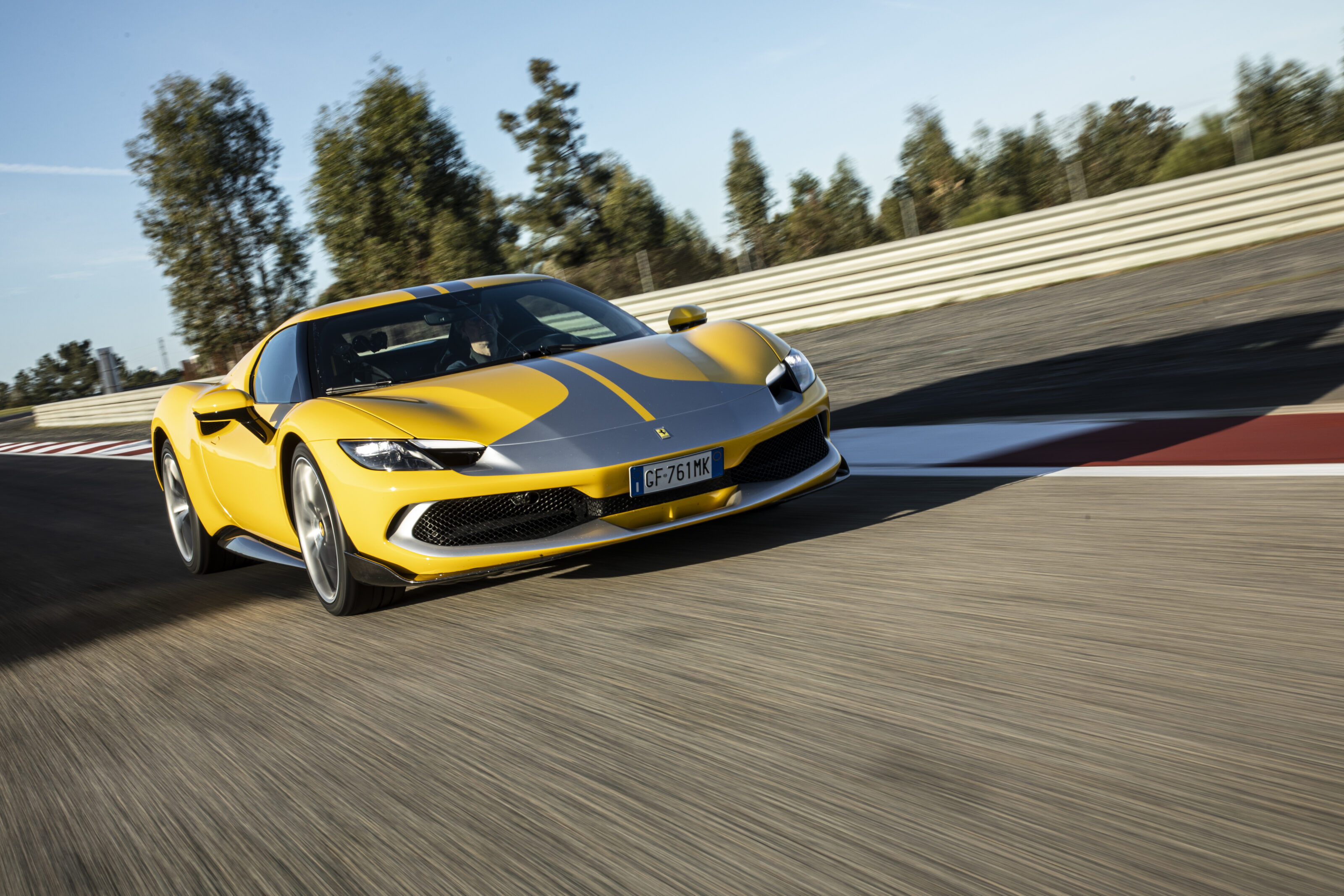
Underpinning the chassis hardware, of course, is the latest iteration of Ferrari’s superb Side Slip Control (SSC) system. SSC is not interventionist like many stability control systems, but expansionist; it uses its vast array of sensors and actuators not to tell the driver off when they make a mistake, but to help them achieve what they’re trying to do. Each iteration of SSC, which debuted on the 458 Speciale in 2013, has been better, more seamless than the last. The 296 GTB’s version helps you brake like Daniel Ricciardo.
The 296 GTB’s 398mm front and 360mm rear carbon-ceramic rotors are controlled by a sophisticated brake-by-wire system and next-generation ABS that allows precise control of the braking efforts at each individual wheel; so precise, in fact, it will allow you to keep your foot hard on the brake pedal all the way into the apex of the corner while it works with all the other systems to ensure the car stays on the line you want.
Think of it as a trail-braking aid. It doesn’t rewrite the laws of physics, but it’ll have old Isaac Newton wondering. You can go so deep under brakes into corners with complete control.
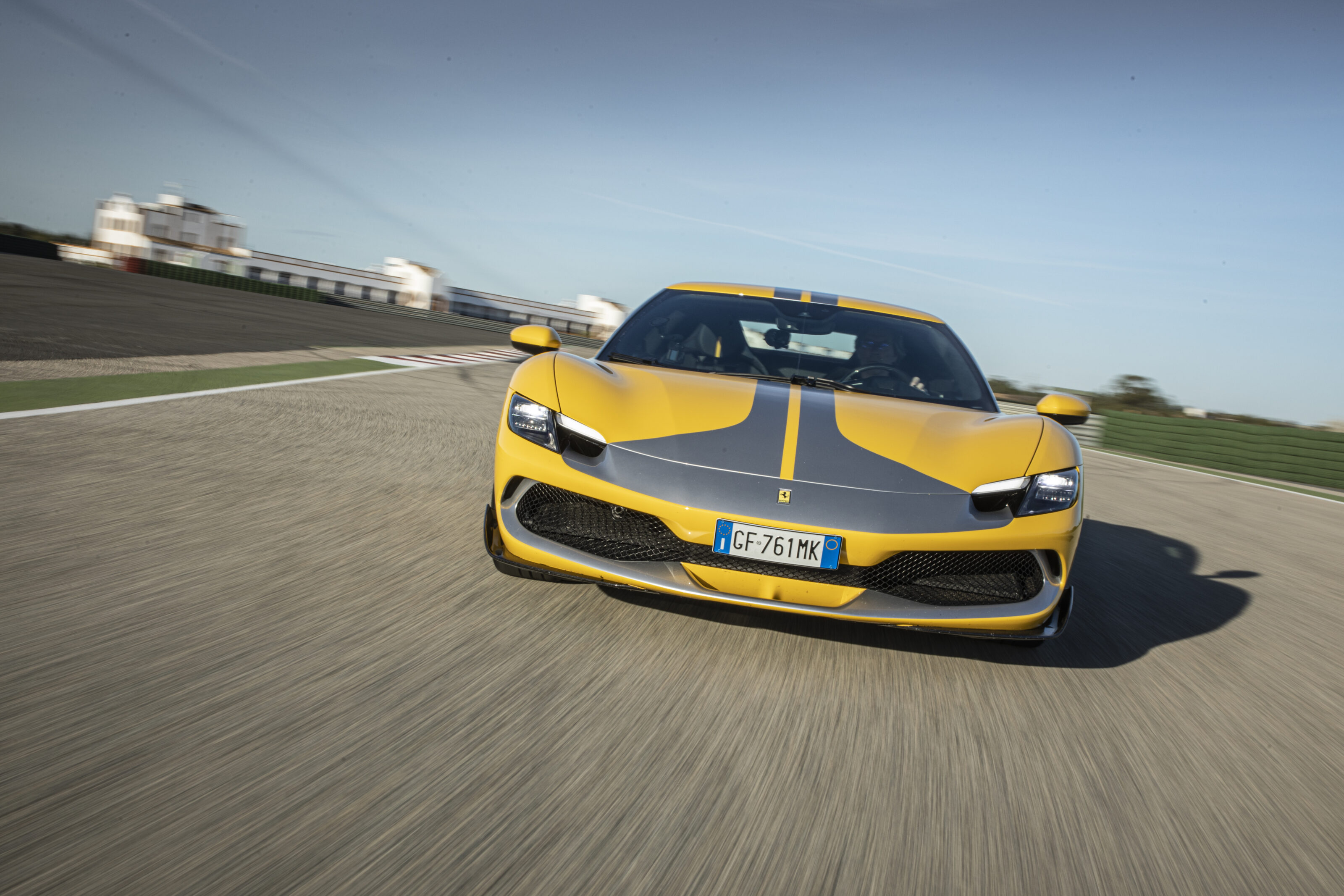
Raffaele de Simone says he uses the same lines around Ferrari’s Fiorano test track in the 296 GTB as he does in a 488 Pista, staying on the brakes right until he’s ready to go to power. It’s at this point where you may have to adjust your driving style slightly to make the most of this Ferrari: Get too heavy on the throttle in tight corners before you’ve begun to open the steering, and the front end will push slightly due to the enormous traction from the rear.
The Ferrari 296 GTB is a welcome break from the supercar arms race. It’s not meant to be the fastest or most powerful Ferrari. It’s meant to be the most fun to drive Ferrari. And it is. It’s also a very liveable Ferrari, a car that can genuinely be used every day.
The manual manettino switch on the right side of the steering wheel that controls the dynamic systems is complemented by a touch-panel e-manettino on the left that controls the powertrain modes. Default start mode is Hybrid, in which the car can be driven on pure electric power for 25km before the engine fires up with – at least for the first time – a disconcerting bellow that lasts until the catalytic converters have warmed up sufficiently.
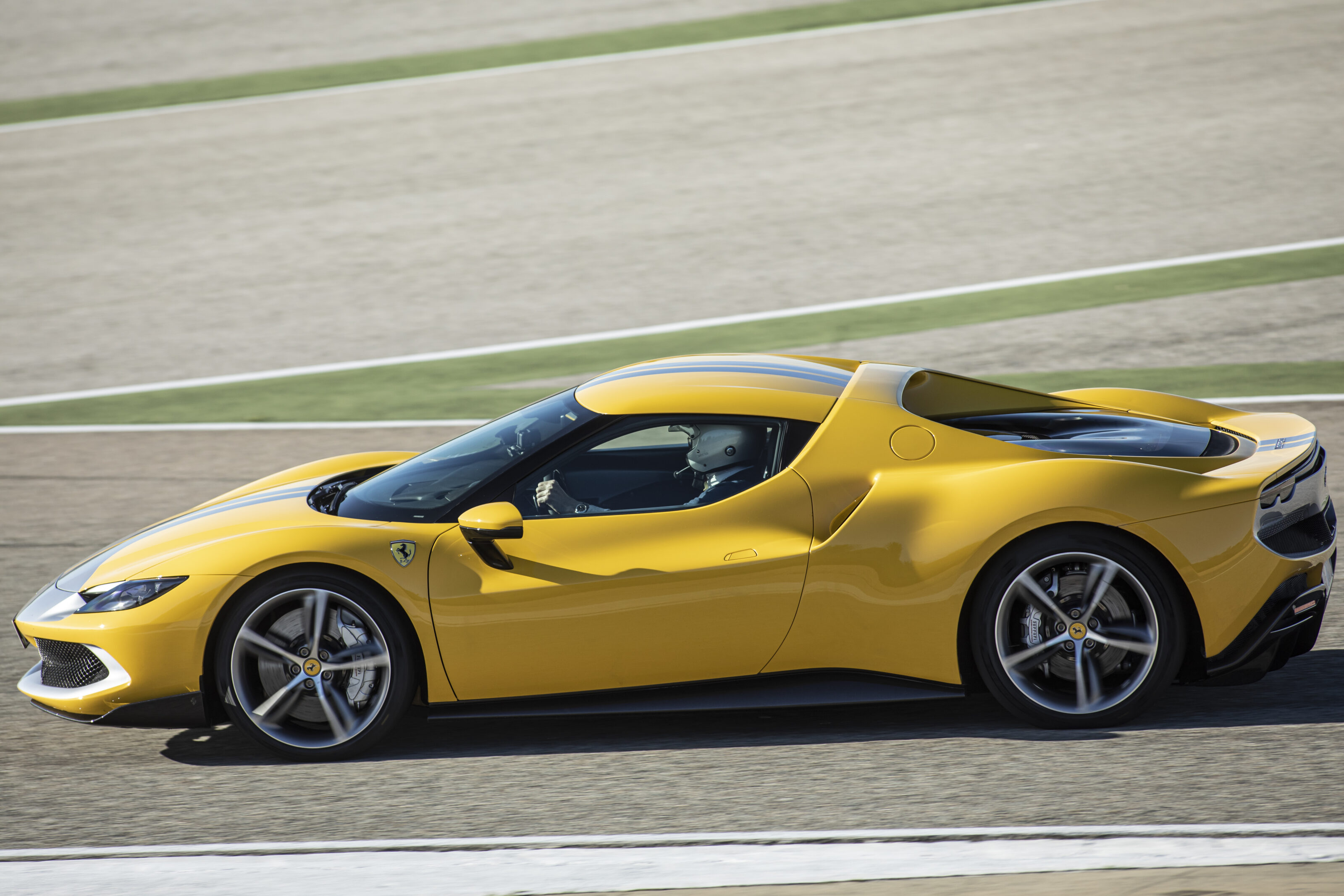
The system then mixes and matches ICE and e-power to achieve the best combination of efficiency and performance, though whenever the V6 is running the powertrain is ready to produce maximum power and torque on demand. The transitions between e-motor and ICE are seamless.
There is an eDrive mode that allows pure EV driving at speeds up to 135km/h. Performance mode ensures the V6 is always kept running to make sure the battery is always fully charged. Qualifying mode – yes, really – cuts the amount of time spent recharging the battery to always ensure the maximum powertrain output.
Yes, it looks good here, but photos don’t really do the 296 GTB justice. It’s beautifully proportioned and surfaced, and the easter-egg homages to the mid-engine 250LM built in the 1960s – the voluptuous rear haunches, the vertical rear screen shrouded by flying buttresses extending from the B-pillar ‘bridge’ that arcs over the rear of the roof – add a lot of character that’s only really evident when you walk around the car.
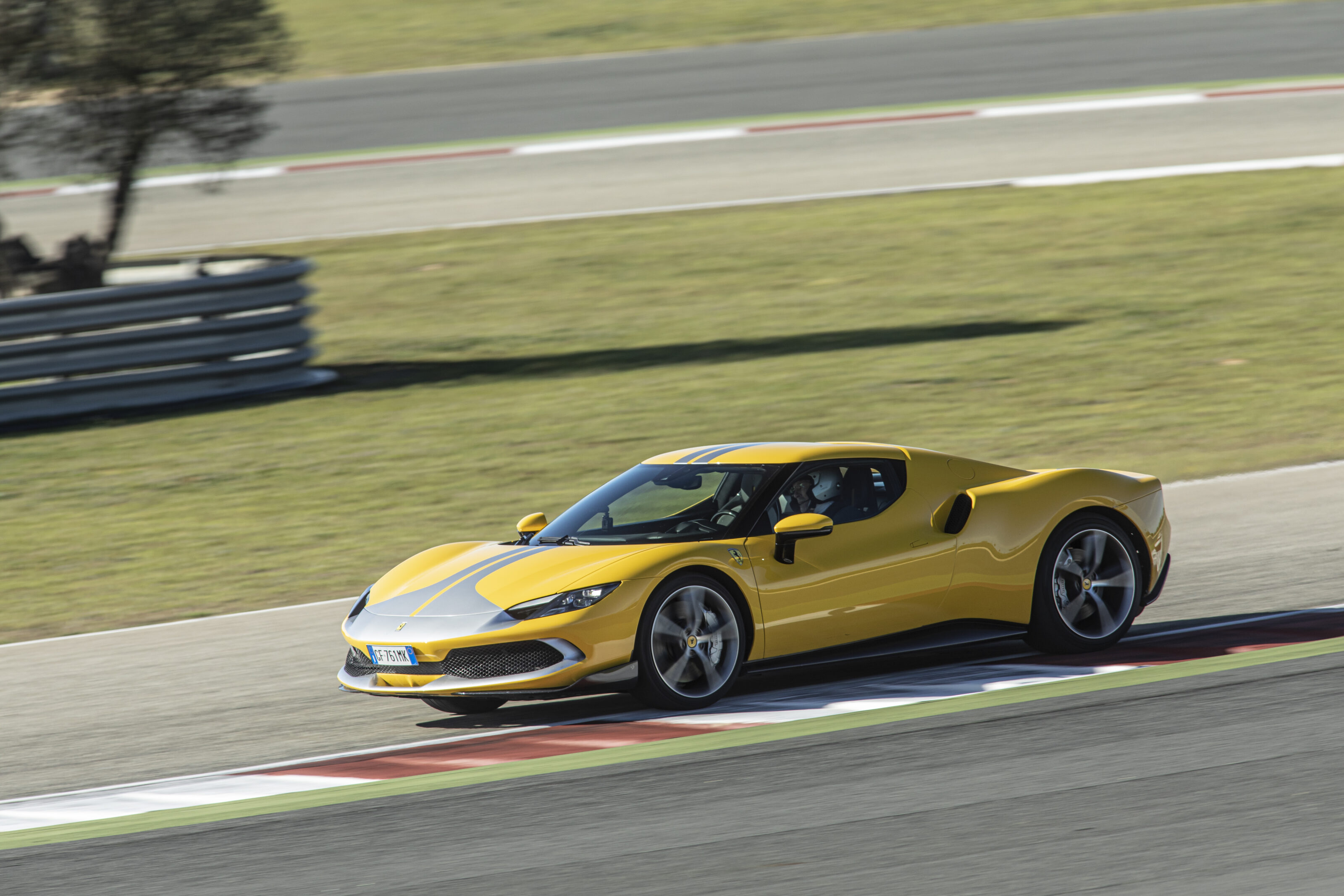
As on the Roma gran turismo, the 296 GTB’s rear lights eschew Ferrari’s traditional round format – a move that took a lot of selling from the in-house design team, says exterior designer Carlo Palazzini. But the technically styled, flush-mounted lights allow the forms and surfaces to define the rear-end graphic.
The large central exhaust outlet adds visual – and aural – drama. The only active piece of aerodynamic kit, a vertical spoiler that deploys at speed or under braking – has been ingeniously packaged to slide out from between the lights.
Ferrari has long built exotic and desirable, if sometimes unforgivably flawed, sports cars. But the 296 GTB is the product of a coolly confident Ferrari at the top of its game; a Ferrari that’s not afraid to embrace cutting edge, even controversial, technologies to create the best performing, best handling, best driving sports cars it knows how to build. Maranello fully understands the potent market power of its traditions, its myths, and its legends, however, it is at last refusing to have its cars trapped by them.
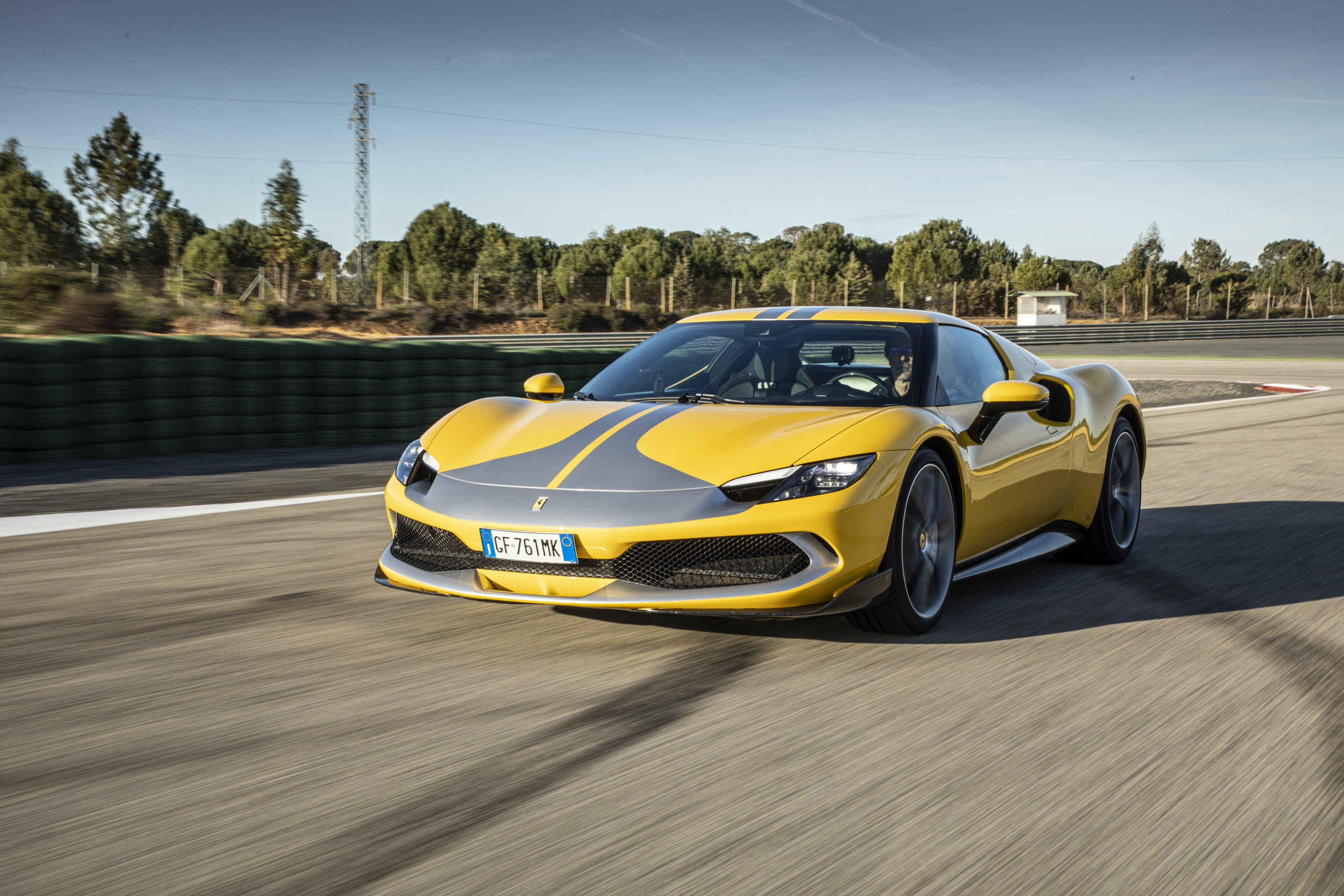
VERDICT
Things we like: Balance; versatility; depth of engineering; truly potent performance
Things we dislike: Styling divides opinion; front-end push at limit; we need a local drive
2022 Ferrari 296 GTB specifications
| Engine: | 2992cc V6 (120 degrees), dohc, 24v, twin turbosu00a0 |
|---|---|
| Max power: | 488kW at 8000rpm (check rpm) |
| Max torque: | 740Nm at 6250rpm |
| Electric motor: | 3-phase axial-flux, single stator, dual rotors |
| Max electric power: | 122kW |
| Max electric torque: | 315Nm |
| Hybrid system combined max power: | 610kW at 8000rpm |
| Transmission: | 8-speed dual-clutch auto |
| Battery: | 7.5kWh |
| 0-100km/h: | 2.9sec (claimed) |
| Weight: | 1470kg |
| L/W/W/WB: | 4565/1958/1187/2600mm |
| Price: | $568,300 (Assetto Fiorano $641,599) |
| On sale: | Q4 2022 |
Things we like
- Balance
- Versatility
- Depth of engineering
- Truly potent performance
Not so much
- Styling divides opinion
- Front-end push at limit
- We need a local drive
We recommend
-
 News
News2025 New Car Calendar: All the new cars coming to Australia
Take a look at our list of what is expected to launch in Australia in 2025 – plus those we might not see locally just yet
-
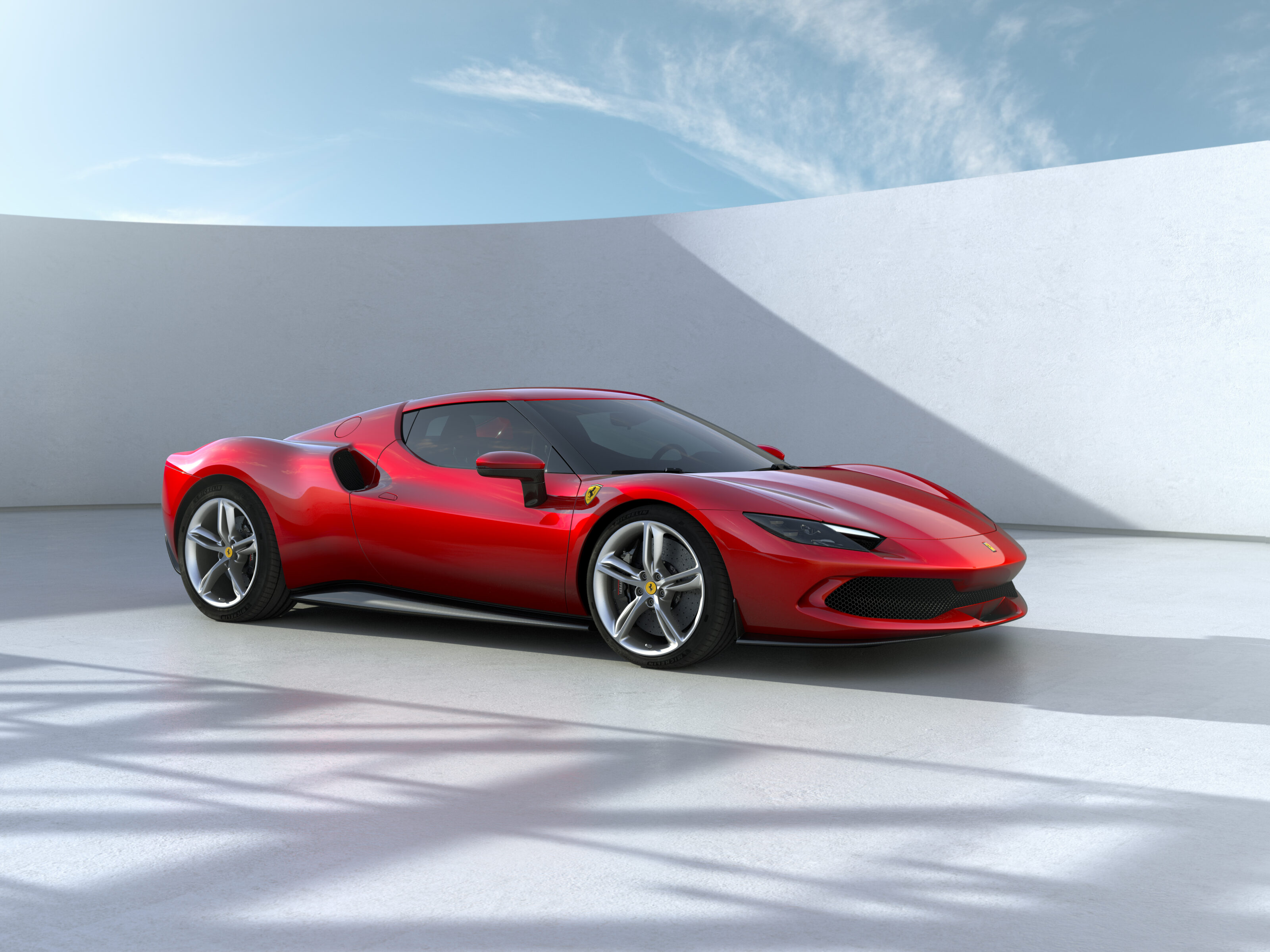 News
NewsFerrari 296 GTB debuts with hybrid V6
Wicked plug-in hybrid sports car is one of the fastest to come out of Maranello
-
 Features
FeaturesFerrari 296 GTB lands in Australia
MOTOR jumps in for a first look at the face of Ferrari's new hybrid future


